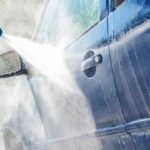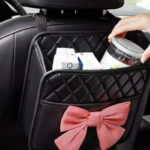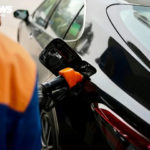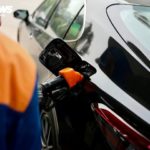Driving through deep water is a major concern for car users in Vietnam.
Many cars stall after passing through flooded areas, while others do not, leading to subjective psychology, overlooking the necessary checks to ensure the car can operate smoothly and without decreasing quality.
Many vehicle owners have had to spend millions to fix their water-damaged cars. Let’s go over some items to check after driving through flooded areas.
Cars that pass through water without stalling
Although the car does not stall immediately when passing through deep water, there is still a risk of damaging the electrical system as well as reducing the quality of the components in the car.
To ensure that the car is not affected, users should take their cars to service and repair shops for a general check-up.

At the repair shop, technicians will perform an overall check of the car’s condition. First of all, the engine compartment will be carefully inspected. Check if the air intake and air filter area are wet. If these two areas are not wet, the car can continue to move. Pay attention to check the battery for any water entry, if there is, dry it to avoid short circuits.
In case the air intake is wet but the air filter is still dry, dry the wet area. Next, check if the battery is wet, if so, dry it, check the engine oil to see if it has changed color or if there are bubbles, then change the engine oil if necessary.
In the worst case, if the air intake and air filter are wet, remove the battery terminals, remove the spark plugs, and start the engine to push the water out of the combustion chamber, then clean the combustion chamber and reinstall the spark plugs. The air intake area, as well as the air intake system, will be dry cleaned and a new air filter will be installed.
In the undercarriage of the car, check the dust cover and water repellent rubber parts. If any of these rubber parts are torn or soaked in water, it will cause water to penetrate into the internal components, resulting in corrosion, poor lubrication, rust, and inaccurate operation. Then it is necessary to replace the damaged rubber parts.
In addition, check the electrical connectors for water entry or moisture, perform cleaning and drying, then reinstall them to ensure no short circuits and ensure the durability of the car’s electrical system. The cost of handling this situation will not be high and the processing time will be quick.

When driving through deep water, some water may seep into the car. For cases where water enters the floor of the car, it is necessary to clean to avoid the danger of electric shock.
The tasks to be done include removing the electrical connectors for cleaning and drying, removing the seats and removing the floor mats and soundproofing mats (usually made of felt) for cleaning and drying. In addition, check for any short circuits after reinstalling the internal electrical system of the car.
Cars that pass through water and stall
Many drivers are unable to determine the water level of the flooded area or deliberately drive into deep water, causing the car to stall. If not handled correctly, this situation will cause serious damage to the car and the repair costs will be very high.
If the car enters a flooded area and stalls, turn off the key, turn off all electrical devices inside the car, and call for roadside assistance to have the car taken to the repair shop. The items to be checked in this case are similar to those mentioned above. If the engine has not been hydrostatically damaged, the repair costs will be minimal and the repair time will be fast.

If the engine is hydrostatically damaged or the car stalls when submerged in water and the driver deliberately restarts the engine, it will cause serious or very serious hydrostatic damage. If it is mild, the transmission shaft will be bent, if it is severe, the transmission shaft will break, the engine block will rupture, and other associated damages will occur.
The solution in this case is to replace the damaged engine parts, check and clean the electrical system, handle wet floors (if any), check and replace the dust cover rubber parts under the car (if damaged), etc. The repair cost for this case is the highest and it also reduces the value of the car the most.
In order for drivers to confidently use their cars after passing through flooded areas, it is important to carefully check their cars and promptly address any issues to ensure safety and minimize potential repair costs.
According to Zing














